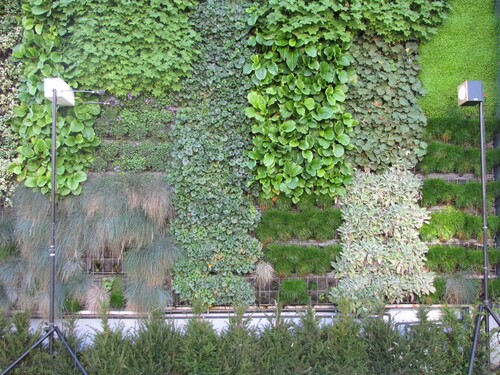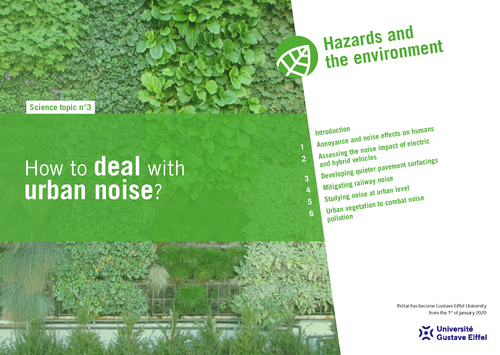How to deal with urban noise ?
Judicaël Picaut, scientific coordinator of the science topic, Gustave Eiffel University
Noise is a nuisance that affects two out of three people in France. The problem is particularly acute in urban areas because of noise outside buildings, caused by transport and worksites, for example.
In more concrete terms, noise is considered to be very irritating for 25% and may cause 20% of the population to move home1. Noise can also have a variety of serious health impacts on residents.
Starting in 1992, the public authorities have introduced a number of regulations to manage noise (Act No. 92-1444). The Act was strengthe-ned in 2002 by a European Directive. In addition to local noise level measurements, in many cases, a key aspect of noise management consists in predicting the impact of the noise that will be generated by a new facility such as a new road infrastructure or an industrial area, for example. However, to do this, it is necessary to describe and quantify sources of noise, noise propagation in built-up areas and how noise affects residents. The importance of this issue for society means that the study of noise pollution in the environment, particularly the urban environ-ment, is an extremely important research topic at Gustave Eiffel University.
Research into the characterisation of the sources of urban noise – road or rail – is then extremely important. New generation road vehicles such as hybrid and electric vehicles, which are often thought to make less noise, have recently started to join the vehicle fleet.
These vehicles have quieter engines, so rolling noise, caused by contact between the tire and the pavement becomes dominant. This emerging phenomenon is stimulating new research which sets out, in particular, to develop road surfaces which are “optimised” for noise. With regard to rail transport, the noise generated by trams and trains is produced from a variety of sources. These include squeal noise, which may be very loud and require appropriate investigation. While the study of noise propagation in urban areas has resulted in a large amount of research in the last 20 years, new planning practices (implementing 30km/h zones, creating exclusive right-of-way transport systems, fostering multi-modal travel practices, etc.) make it necessary to revise the methods traditionally employed in environmental acoustics
The development of noise predicting models that take account of the traffic flows at different times for different transport modalities, at large urban scales has thus become essential, in particular in order to evaluate public environmental protection policies.
New urban planting policies are another example of planning mea-sures. Reintroducing vegetation in urban areas was initially envisaged because of its many benefits in terms of, for example, resident comfort, building aesthetics, the reduction of urban heat islands and the absorption of pollution, but it has been found that parks or green facades or roofs can also reduce noise levels.
Noise is a nuisance for two out of three French people, especially in urban areas, because of noise outside the home.

Photo credit : Gustave Eiffel University.
Summary
Introduction
Understanding the disturbance and the effects caused by noise
Assessing the noise impact of electric and hybrid vehicles
Developing quieter pavement surfacings
Mitigating railway noise
Studying noise at urban level
- By Joël Lelong
Urban vegetation to combat noise pollution
Identity card of the science topic
| Title: | How to deal with urban noise? |
| Coordinator: | Judicaël Picaut |
| Authors: | Judicaël Picaut, Patricia Champelovier, Marie-Agnès Pallas, Michel Bérengier, Olivier Chiello, Joël Lelong, Benoît Gauvreau, Gwenaël Guillaume |
| Collection: | Ifsttar sciences topics |
| Version: | PDF for free download in web and print versions |
| Licence: | Creative Common CC BY-SA 4.0 |
| Publication: | April 2014, updated in september 2017 |
| Languages: | French and english |
| Keywords: | Noise, urban, noise, infrastructure, decibels, acoustics, health, Ifsttar science topics |

